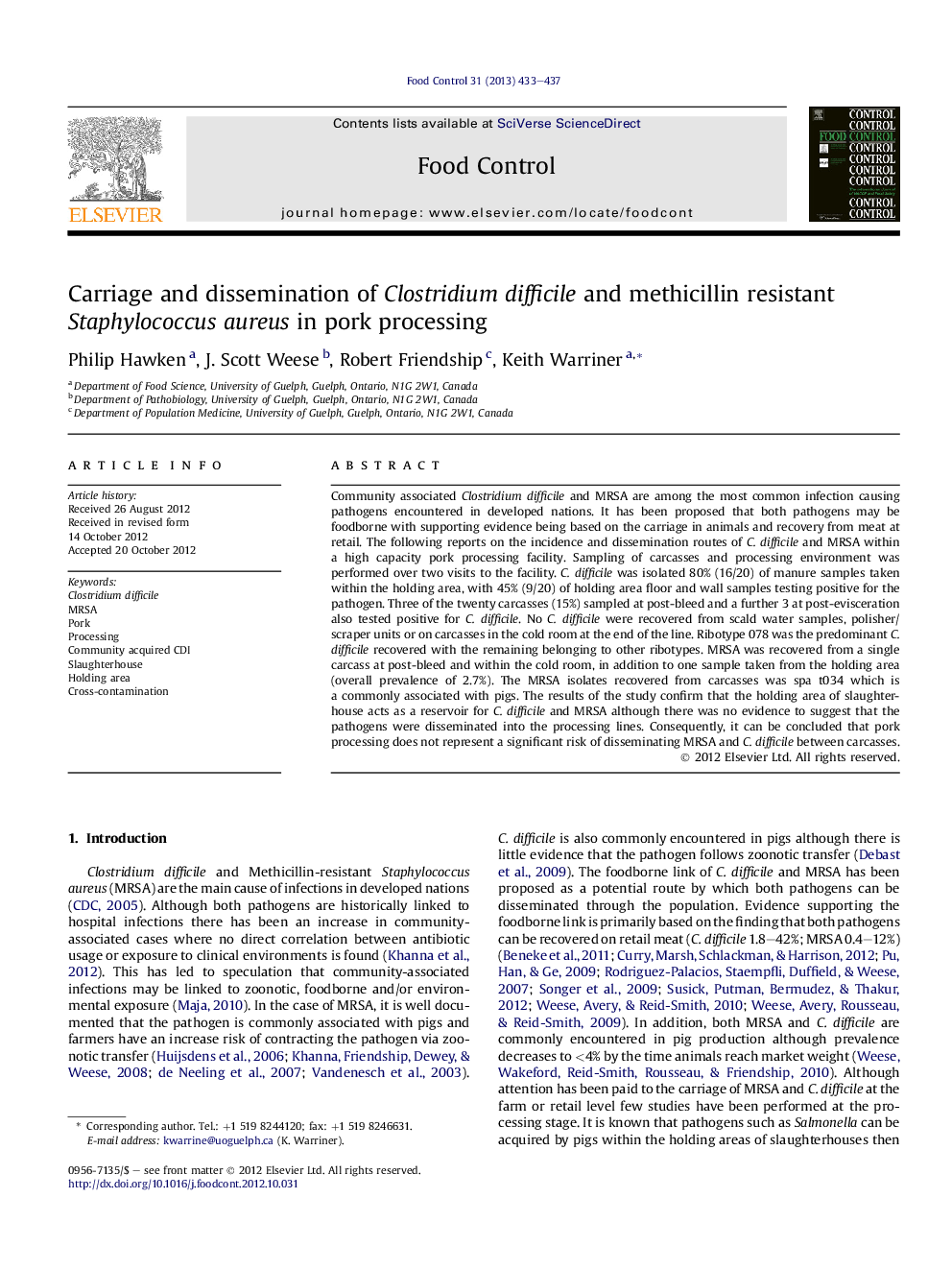| Article ID | Journal | Published Year | Pages | File Type |
|---|---|---|---|---|
| 6392968 | Food Control | 2013 | 5 Pages |
Community associated Clostridium difficile and MRSA are among the most common infection causing pathogens encountered in developed nations. It has been proposed that both pathogens may be foodborne with supporting evidence being based on the carriage in animals and recovery from meat at retail. The following reports on the incidence and dissemination routes of C. difficile and MRSA within a high capacity pork processing facility. Sampling of carcasses and processing environment was performed over two visits to the facility. C. difficile was isolated 80% (16/20) of manure samples taken within the holding area, with 45% (9/20) of holding area floor and wall samples testing positive for the pathogen. Three of the twenty carcasses (15%) sampled at post-bleed and a further 3 at post-evisceration also tested positive for C. difficile. No C. difficile were recovered from scald water samples, polisher/scraper units or on carcasses in the cold room at the end of the line. Ribotype 078 was the predominant C. difficile recovered with the remaining belonging to other ribotypes. MRSA was recovered from a single carcass at post-bleed and within the cold room, in addition to one sample taken from the holding area (overall prevalence of 2.7%). The MRSA isolates recovered from carcasses was spa t034 which is a commonly associated with pigs. The results of the study confirm that the holding area of slaughterhouse acts as a reservoir for C. difficile and MRSA although there was no evidence to suggest that the pathogens were disseminated into the processing lines. Consequently, it can be concluded that pork processing does not represent a significant risk of disseminating MRSA and C. difficile between carcasses.
⺠Carriage of MRSA and Clostridium difficile on pork carcasses and processing facility determined. ⺠C. difficile was highly prevalent within the holding area but less so on carcasses. ⺠The majority of C. difficile recovered were identified as ribotype 078. ⺠MRSA was only recovered on a low number of carcasses sampled. ⺠Both C. difficile appear restricted to holding area and not disseminated onto the line.
